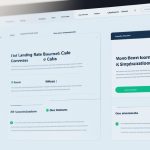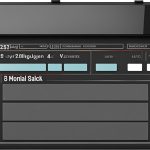Are you looking to take your email marketing to the next level? Discover the power of Constant Contact, a leading email marketing platform that offers a range of solutions and services to help businesses effectively engage their audiences and drive growth.
In this comprehensive guide, we will delve into the world of email marketing and show you how to master it with Constant Contact. Learn how to set up your account for success, segment and personalize your email lists, design captivating emails, optimize your campaigns using analytics, and much more.
Whether you’re a small business owner or a seasoned marketer, this article will provide you with valuable insights and strategies to elevate your email marketing game. Get ready to unlock the full potential of email marketing with Constant Contact!
Key Takeaways:
- Constant Contact is a powerful email marketing platform that offers a range of solutions for businesses.
- Setting up your Constant Contact account is crucial for email marketing success.
- Email list segmentation and personalization can significantly improve engagement and conversions.
- Designing captivating emails with impactful images and a visually appealing layout is essential.
- Constant Contact’s analytics and automation tools can help optimize your email campaigns.
Discover the Benefits of Using Constant Contact for Email Marketing
Constant Contact offers numerous benefits for businesses looking to harness the power of email marketing. With Constant Contact, businesses can easily create and manage email campaigns, access a wide range of customizable email templates, and utilize advanced features such as automation and analytics.
Constant Contact provides businesses with a user-friendly platform that simplifies the email marketing process. Whether you’re a small business owner or a marketing professional, Constant Contact’s intuitive interface makes it easy to create professional-looking emails that resonate with your audience.
“Constant Contact has revolutionized our email marketing strategy. With their platform, we’ve been able to send targeted, personalized emails to our subscribers, resulting in higher open and click-through rates.”
– Jane Smith, Marketing Manager
One of the major benefits of using Constant Contact is the availability of customizable email templates. These templates allow businesses to create eye-catching and visually appealing emails that align with their brand identity. You can choose from a variety of pre-designed templates or customize one to match your specific needs and preferences.
Furthermore, Constant Contact’s advanced features, such as automation and analytics, provide businesses with powerful tools to optimize their email marketing campaigns. Automation allows you to set up personalized email journeys based on subscriber actions, saving you time and effort while delivering targeted content to your audience. Analytics provide valuable insights into the performance of your emails, helping you make data-driven decisions to improve your campaign effectiveness.
Another advantage of using Constant Contact is their exceptional customer support and resources. Constant Contact offers a dedicated customer support team that is available to assist businesses with any questions or challenges they may face. Additionally, Constant Contact provides a wealth of educational resources, including webinars, guides, and blogs, to help businesses succeed in their email marketing efforts.
In summary, Constant Contact is a comprehensive email marketing platform that offers a range of benefits for businesses. From easy campaign creation and management to customizable templates and advanced features, Constant Contact empowers businesses to streamline their email marketing processes and achieve better results.
Setting Up Your Constant Contact Account for Success
Setting up a Constant Contact account is the first step towards email marketing success. It’s important for businesses to choose the right plan that aligns with their specific needs and budget. Constant Contact offers a variety of plans with different features and pricing options to cater to every business size.
To begin, visit the Constant Contact website and sign up for an account. During the sign-up process, you will be prompted to select a plan that suits your requirements. Consider factors such as the number of contacts you have, the frequency of your email campaigns, and the features you need to effectively reach your audience.
Once your Constant Contact account is set up, you can start customizing your email templates. Constant Contact provides a user-friendly interface that allows you to easily modify your templates to match your brand’s look and feel. Customizing your email templates helps create a consistent brand image and ensures your messages deliver a powerful impact to your target audience.
With personalized templates, you can design visually appealing emails that capture your audience’s attention and drive engagement. Whether you’re promoting products, sharing updates, or inviting customers to events, Constant Contact’s customizable templates make it easy to create a professional and polished email campaign.
By setting up your Constant Contact account, choosing the right plan, and customizing your email templates, you’re on your way to email marketing success. The next sections of this article will delve into email list segmentation, personalization techniques, and strategies for crafting high-performing email campaigns to further enhance your marketing efforts.
Email List Segmentation and Personalization Techniques
Email list segmentation and personalization are essential strategies for achieving success in email marketing. By segmenting your email list and delivering personalized content, you can significantly increase engagement and conversions. Here are some techniques to help you effectively segment your email list and personalize your email campaigns:
1. Collect Relevant Data for Segmentation
In order to segment your email list effectively, it’s important to collect relevant data about your subscribers. This can include demographics such as age, gender, location, or customer preferences and purchase history. Gathering this data will enable you to create targeted segments based on your subscribers’ characteristics and interests.
2. Create Segmented Lists
Once you have collected the necessary data, use it to divide your email list into smaller, more targeted segments. This allows you to tailor your content to each specific segment, increasing its relevance and resonance with your subscribers. For example, you may want to create segments based on geographic location and send targeted offers or promotions to subscribers in specific areas.
3. Craft Personalized Content
With your segmented lists in place, it’s time to create personalized content for each segment. Personalization can go beyond simply addressing subscribers by their first names. Tailor your email content to reflect your subscribers’ interests, preferences, and previous interactions with your brand. This can include recommending products based on their purchase history or sending personalized birthday offers.
4. Use Dynamic Content
Dynamic content allows you to create email campaigns that automatically adapt based on your subscribers’ preferences or behaviors. By using dynamic content blocks, you can show different product recommendations or promotional content to different segments within the same email. This level of personalization enhances the subscriber experience, increasing engagement and conversions.
5. Test and Refine
Regularly test and analyze the performance of your segmented and personalized email campaigns. Measure key metrics such as open rates, click-through rates, and conversions to gauge the effectiveness of your strategies. Use this data to optimize your segmentation and personalization techniques and continually improve your email marketing efforts.
By effectively segmenting your email list and delivering personalized content, you can create more meaningful connections with your subscribers, drive engagement, and achieve better results from your email marketing campaigns.
Designing Emails That Captivate Your Audience
When it comes to email marketing, the design of your emails plays a critical role in capturing your audience’s attention. An email with an appealing design is more likely to stand out in a crowded inbox and encourage recipients to engage with your content. To create visually captivating emails, consider the following strategies:
- Utilizing impactful images: Images have the power to convey emotions and evoke a response from your audience. Including relevant and impactful images in your emails can help capture attention and communicate your message effectively. Whether it’s a product image, a compelling illustration, or a visually stunning photograph, images can enhance engagement and make your emails more memorable.
- Create a visually appealing layout: In addition to images, the overall layout of your email plays a crucial role in capturing your audience’s interest. Use colors that align with your brand and evoke the desired mood or emotion. Choose fonts that are easy to read and visually pleasing. Pay attention to spacing and ensure that your content is well-organized and easy to navigate.
By designing visually captivating emails, you can make a lasting impression on your audience and increase the likelihood of them taking the desired action, whether it’s making a purchase, signing up for an event, or clicking through to your website.
Demystifying Click Segmentation in Email Campaigns
Click segmentation is a powerful technique that allows businesses to optimize their email campaigns by understanding their subscribers’ interests and preferences. By analyzing the clicks on different links within emails, businesses can gain valuable insights that can inform their overall email marketing strategy. In this section, we will explore the concept of click segmentation and how it can help you enhance your email campaign performance.
Click segmentation involves dividing your email list into different segments based on the links subscribers click within your emails. By tracking and analyzing these clicks, you can identify the topics, products, or services that most interest your subscribers.
Let’s take a closer look at how click segmentation works in practice:
- Create targeted links: When designing your email campaigns, make sure to include relevant and specific links that align with the content of the email. For example, if you are promoting different product categories, include separate links for each category. This will allow you to track which product categories resonate most with your subscribers.
- Analyze click data: Once you’ve sent out your emails, monitor the click data using an email marketing platform like Constant Contact. Through their analytics tools, you can track and analyze which links are getting the most clicks, and which topics or offers are generating the most interest.
- Segment your list: Based on the click data, segment your email list into different groups or segments. Assign each segment a specific interest or category based on their click behavior. This will help you tailor future email campaigns to each segment’s unique preferences.
- Personalize your content: Armed with click segmentation data, you can now create more personalized and targeted content for each segment. By sending emails that are relevant to the interests of each segment, you’ll increase engagement and improve your chances of converting subscribers into customers.
By making use of click segmentation, you can optimize your email campaigns to cater to the specific needs and interests of your subscribers. This level of personalization not only increases engagement and click-through rates but also helps you build stronger relationships with your audience.
Continue reading to discover strategies for writing the perfect marketing email and learn practical tips for crafting high-performing promotional emails that drive conversions.
Writing the Perfect Marketing Email: Length and Content
When it comes to crafting the perfect marketing email, two key factors come into play: message clarity and content length. Finding the right balance between these elements is essential to engage your audience effectively.
First and foremost, your message should be clear and concise. Use a straightforward language that is easy to understand, avoiding jargon or overly complex terms. Clearly state the purpose of your email and the action you want the recipient to take. Keep in mind that the average attention span of readers is limited, so it’s crucial to deliver your message in a concise and straightforward manner.
Additionally, attention should be given to the length of your email. While there is no fixed rule for the ideal email length, it’s generally recommended to keep it concise and focused. Long, wordy emails can overwhelm recipients and may result in them losing interest before reaching your call to action.
Tip: Use formatting techniques such as bullet points or subheadings to break up your content and make it more scannable for readers.
Structuring your content is also important in delivering a compelling email. Consider utilizing a hierarchy of information, starting with a strong and attention-grabbing subject line, followed by a concise and engaging introduction. Then, organize your main content into short paragraphs or bullet points to maintain readability.
Furthermore, pay attention to the tone of your email. Ensure that it aligns with your brand’s voice and reflects the desired impression you want to leave on your audience. Whether it’s a professional tone for B2B communication or a conversational tone for B2C interactions, make sure it resonates with your target recipients.
Remember: A clear, concise, and well-structured email with an appropriate tone can make all the difference in capturing your audience’s attention and driving them to take the desired action.
| Aspect | Best Practices |
|---|---|
| Subject Line | – Keep it concise and attention-grabbing – Personalize when possible |
| Introduction | – Clearly state the purpose of the email – Engage the reader from the first sentence |
| Content Length | – Keep it concise and focused – Break up the content into short paragraphs or bullet points |
| Tone | – Align with your brand’s voice – Reflect the desired impression on the audience |
| Call to Action | – Clearly state the desired action – Make it prominent and easily clickable |
| Personalization | – Use recipient’s name when appropriate – Segment your email list for targeted messaging |
| Proofreading | – Check for spelling and grammatical errors – Ensure links and images are working |
Strategies for Crafting High-Performing Promotional Emails
Crafting high-performing promotional emails requires a strategic approach to maximize audience engagement and drive conversions. By implementing effective strategies, businesses can create irresistible offers and compelling calls-to-action that compel recipients to take action. Let’s explore some key strategies to craft promotional emails that deliver results.
1. Create an Irresistible Offer
An irresistible offer is the cornerstone of a successful promotional email. It should provide clear value and be tailored to the target audience’s needs and desires. Whether it’s a discount, exclusive access to content, or a limited-time offer, the offer should be compelling enough to grab the recipient’s attention and prompt immediate action.
2. Craft Effective Calls-to-Action
Effective calls-to-action (CTAs) are essential for driving conversions. A strong CTA should be clear, concise, and action-oriented. Use compelling language that encourages recipients to take the desired action, such as “Shop now,” “Get started today,” or “Claim your offer.” Additionally, make sure the CTA stands out visually by using contrasting colors and noticeable buttons.
3. Personalize the Email
Personalization can significantly enhance the effectiveness of promotional emails. Use recipient data to tailor the content and offer to their interests and preferences. Address recipients by their names and segment your email list based on demographics, purchase history, or engagement levels. By delivering personalized content, you can make the email more relevant and increase the chances of conversion.
4. Use Compelling Subject Lines
The subject line is the first thing recipients see, and it greatly influences whether they open the email or not. Craft a subject line that grabs attention, creates curiosity, and suggests the value they’ll find inside the email. Experiment with different techniques, such as using numbers, posing questions, or leveraging urgency or exclusivity, to make your subject lines more enticing.
5. Segment Your Audience
Segmenting your audience based on characteristics and behaviors allows you to deliver more targeted and relevant promotional emails. By understanding the unique needs and interests of different segments, you can tailor the content and offer accordingly. This increases the likelihood of engagement and conversion, as recipients feel that the email speaks directly to their specific needs.
6. Test and Optimize Your Campaigns
Constantly testing and optimizing your promotional email campaigns is crucial for improving their performance. Test different elements such as subject lines, CTAs, layout, and offers to identify what resonates best with your audience. Use A/B testing to compare different versions and make data-driven decisions to refine your campaigns for better results.
Incorporating these strategies into your promotional email campaigns will help you craft emails that stand out, engage your audience, and drive desired actions. Remember to track and analyze the results to gain insights and continuously improve your future campaigns.
The Essentials of Creating an Engaging Newsletter Email
Newsletters are a powerful tool for businesses to maintain interest and connection with their audience. To create an engaging newsletter, there are a few essential elements that should be incorporated.
- Fresh Content: It is crucial to provide subscribers with fresh and valuable content in every newsletter. This can include industry news, updates, tips, and insights that are relevant to the audience’s interests and needs.
- Newsletter Personalization: Implementing segmentation strategies for newsletter personalization can significantly enhance the relevance and impact of the content. By tailoring the newsletter to specific audience segments, businesses can deliver a more personalized experience, which leads to higher engagement.
- Eye-Catching Design: Visual appeal is key when it comes to newsletters. Utilize captivating images, an attractive layout, and consistent branding to make your newsletter visually appealing and memorable.
- Clear and Concise Messaging: Keep your newsletter content concise and easy to read. Use clear language, headings, and bullet points to break down information and make it easily scannable for readers.
- Call-to-Action: Every newsletter should include a clear call-to-action that guides subscribers to take the desired action, such as visiting your website, making a purchase, or signing up for an event. Make sure the call-to-action stands out and is easily clickable.
- Mobile Optimization: Ensure that your newsletter is optimized for mobile devices. With the increasing number of people accessing emails on their smartphones, a mobile-friendly design is essential to provide a seamless experience for all subscribers.
By incorporating these essential elements into your newsletter, you can create an engaging and impactful email that keeps your audience informed, entertained, and connected with your brand.
Email Marketing Templates That Amplify Your Campaigns
Email marketing templates are essential tools for businesses looking to amplify their campaigns and achieve maximum impact. With the wide range of email marketing templates offered by Constant Contact, businesses can save time and effort in designing emails from scratch, while still creating professional and polished email campaigns.
Using email marketing templates allows businesses to leverage pre-designed layouts and designs that are visually appealing and engaging. These templates are designed to capture the attention of recipients and deliver messages effectively, increasing open rates and click-through rates.
Whether you are launching a new product, promoting a sale, or sending a newsletter, Constant Contact’s email marketing templates offer a variety of options to suit your specific needs. From vibrant and eye-catching designs to simple and elegant layouts, you can easily find a template that aligns with your brand image and communication style.
Customization is another advantage of using email marketing templates. Constant Contact’s templates allow businesses to insert their own content, including images, text, and branding elements, to create a personalized email that reflects their unique identity. This customization feature ensures that your email stands out and resonates with your audience.
By utilizing email marketing templates, businesses can streamline their email campaign creation process and ensure consistency across their email communications. This consistency helps establish brand recognition and fosters a stronger connection with subscribers, ultimately leading to better campaign performance and conversion rates.
With Constant Contact’s email marketing templates, you have the power to amplify your campaigns and make a lasting impression on your audience. Take advantage of these professionally designed templates to create impactful and visually stunning emails that drive results.
Copywriting Secrets for Email Marketing Success
Copywriting is a critical aspect of email marketing success. It involves crafting compelling and persuasive messages that resonate with your audience and drive them to take action.
One key element of effective copywriting is establishing a consistent brand voice. A brand voice is the unique personality and tone that reflects your brand’s values and resonates with your target audience. By establishing a consistent brand voice in your email copy, you can build brand recognition, trust, and connection with your subscribers.
When writing copy for your email campaigns, it’s essential to focus on creating copy that converts. This means using techniques that engage and persuade your audience to take the desired action, whether it’s making a purchase, signing up for a webinar, or downloading a resource.
Here are some copywriting secrets to elevate your email marketing:
- Know your audience: Understand who your target audience is, their pain points, and their motivations. Tailor your copy to address their specific needs and desires, making it more compelling and relatable.
- Create a sense of urgency: Use persuasive language and time-limited offers to create a sense of urgency in your emails. This can encourage your subscribers to take immediate action rather than putting it off for later.
- Focus on benefits: Highlight the benefits of your products or services in your email copy. Show your subscribers how your offerings can solve their problems or improve their lives, convincing them to take the desired action.
- Use storytelling: Incorporate storytelling techniques in your email copy to captivate your audience and create an emotional connection. Storytelling helps in making your message more memorable and engaging.
- Use clear and concise language: Keep your email copy concise and to the point. Use clear and simple language to communicate your message effectively and avoid any confusion.
- Include strong call-to-actions (CTAs): Use compelling CTAs that clearly guide your subscribers on what action to take. Make your CTAs stand out by using contrasting colors and persuasive language.
By implementing these copywriting secrets, you can create email campaigns that engage your audience, establish a strong brand identity, and drive conversions.
Optimizing Your Email Campaigns with Constant Contact’s Analytics
Constant Contact’s analytics provide valuable insights into the performance of your email campaigns, helping you make data-driven decisions to enhance your email campaign optimization and improve your ROI. By leveraging the campaign performance data provided by Constant Contact, you can gain a deeper understanding of how your campaigns are performing and identify areas for improvement.
With Constant Contact’s analytics, you can track key metrics such as open rates, click-through rates, conversion rates, and unsubscribe rates. These metrics offer valuable insights into the effectiveness of your email campaigns and allow you to measure the success of your marketing efforts.
By analyzing campaign performance data, you can identify trends and patterns that can inform your email marketing strategy. For example, if you notice that certain subject lines or email designs consistently generate higher open rates, you can apply these insights to future campaigns to increase engagement and improve campaign performance.
Furthermore, Constant Contact’s analytics allow you to segment your audience based on their behavior and engagement with your emails. You can identify your most engaged subscribers and tailor your messaging to resonate with their interests and preferences. This level of personalization can significantly improve the relevance and effectiveness of your email campaigns.
“The data provided by Constant Contact’s analytics empowers businesses to make informed decisions and optimize their email campaigns. By leveraging campaign performance data, you can refine your email marketing strategy and deliver more impactful messages to your audience.”
To optimize your email campaigns with Constant Contact’s analytics, follow these steps:
- Regularly monitor and analyze your campaign performance metrics, such as open rates, click-through rates, and conversion rates.
- Identify trends and patterns in the data to understand what strategies and tactics are working well for your audience.
- Segment your audience based on their behavior and engagement metrics to deliver more personalized and targeted email content.
- Experiment with different subject lines, email designs, and calls-to-action to identify what resonates most with your subscribers.
- Continuously test and refine your email campaigns based on the insights gained from Constant Contact’s analytics.
By utilizing Constant Contact’s analytics and optimizing your email campaigns, you can drive better results, improve your ROI, and enhance your overall email marketing strategy. Take advantage of the data-driven insights provided by Constant Contact to make informed decisions and deliver compelling emails to your audience.
Maximizing Outreach with Email Automation Tools
Email automation tools play a crucial role in maximizing outreach and efficiency in email marketing. These tools enable businesses to deliver more relevant emails to their subscribers based on their actions and behaviors. By automating repetitive tasks and streamlining email processes, businesses can save time and effort, allowing them to focus on other important aspects of their marketing strategy.
With email automation tools, businesses can:
- Set up personalized email workflows that trigger targeted emails based on specific actions or events, such as welcome emails, abandoned cart reminders, or anniversary offers.
- Segment their email list to send highly targeted and relevant content to different customer segments, increasing engagement and conversions.
- Send timely and automated follow-up emails to nurture leads and build lasting relationships with customers.
- Optimize email scheduling and send emails at the most opportune times, taking into account factors like time zones and customer behavior.
By leveraging the power of email automation tools, businesses can ensure that their email marketing campaigns are highly relevant, engaging, and timely. This not only increases the chances of driving conversions but also strengthens customer loyalty and brand engagement.
Take a look at the image below to understand how email automation tools can streamline your email processes and maximize outreach:
As shown in the image, email automation tools provide a centralized platform for managing all aspects of your email marketing campaigns. From creating automated workflows to tracking and monitoring campaign performance, these tools empower businesses to optimize their email marketing efforts and achieve better results.
In the next section, we will explore different types of emails that can be utilized by new bloggers to engage their audience and build a strong subscriber base.
Exploring Email Types: What New Bloggers Should Know
New bloggers can greatly benefit from understanding the different types of emails available to engage their audience and drive growth. By utilizing diverse email formats, such as welcome emails, newsletters, or exclusive content emails, new bloggers can effectively build a subscriber base and establish a strong online presence. Creating engaging email content is essential to capture the attention of readers and encourage them to take action.
One popular type of email is the welcome email, which is sent to new subscribers to introduce them to the blog and express gratitude for their interest. Welcome emails provide an opportunity to make a positive first impression and set the tone for the blogger’s relationship with their audience.
Newsletters are another powerful email type that allows bloggers to regularly communicate with their subscribers. By providing valuable and fresh content, newsletters keep readers informed, entertained, and engaged. Bloggers can use newsletters to share updates, highlight popular blog posts, offer exclusive content, and promote products or services.
Exclusive content emails are an effective way to reward loyal subscribers and create a sense of exclusivity. Bloggers can offer exclusive articles, videos, or discounts to show appreciation for their readers’ support and encourage them to stay subscribed.
Building a subscriber base is crucial for the long-term success of a blog. By consistently delivering diverse and engaging email content, new bloggers can attract more subscribers and retain their existing audience. As the subscriber base grows, bloggers can expand their reach and influence, ultimately leading to increased website traffic and potential monetization opportunities.
Below is a table summarizing the different types of emails that new bloggers can explore to engage their audience and build a subscriber base:
| Email Type | Description |
|---|---|
| Welcome Emails | Sent to new subscribers to introduce the blog and express gratitude |
| Newsletters | Regularly communicate with subscribers, providing valuable and fresh content |
| Exclusive Content Emails | Offer exclusive articles, videos, or discounts as a reward for loyal subscribers |
Constant Contact Pricing: Choosing the Best Plan for Your Budget
When it comes to selecting the right email marketing platform, finding the perfect balance between features and affordability is crucial. Constant Contact understands the importance of catering to different business needs and budgets. With a range of pricing plans, businesses can choose the one that best aligns with their email marketing budget.
Before making a decision, it’s essential to consider a few key factors:
- Features: Evaluate the features offered in each plan and determine which ones are essential for your business. Consider factors such as automation capabilities, analytics tools, contact management, and support options.
- Number of Contacts: Consider the size of your contact list and ensure that the plan you choose can accommodate your current and future contact growth.
- Email Campaign Frequency: Determine how frequently you plan to send emails. Some plans offer a limited number of email sends per month, while others provide unlimited sending options.
By evaluating these factors, you can make an informed decision about which Constant Contact plan is the best fit for your business. Let’s explore the available pricing plans:
| Plan | Price | Features |
|---|---|---|
| Lite | $20/month | Perfect for small businesses: This plan includes basic email marketing features, contact management, list segmentation, and customizable templates. |
| $45/month | Designed for growing businesses: This plan includes all Lite features, plus automation, advanced analytics, A/B testing, and more. | |
| Email Plus | $65/month | Ideal for businesses with advanced needs: This plan includes all Email features, as well as additional features like event marketing, surveys, coupons, and more. |
Each plan offers a range of features designed to support businesses at different stages of their email marketing journey. It’s important to carefully evaluate your requirements and budget to select the plan that provides the best value for your business.
Remember, investing in a suitable email marketing platform is an investment in the growth and success of your business. Choose wisely and leverage the power of Constant Contact to elevate your email marketing efforts.
Conclusion
Mastering email marketing with Constant Contact presents businesses with a multitude of advantages, enabling them to enhance audience engagement and fuel their growth. By leveraging the power of this email marketing platform, businesses can access a range of innovative solutions and services to execute their email marketing strategies more effectively.
The benefits of using Constant Contact are numerous. It offers a user-friendly interface, a wide selection of customizable email templates, and advanced features such as automation and analytics. With excellent customer support and resources, businesses can rely on Constant Contact to support their email marketing efforts.
Next Steps to Elevate Your Email Marketing Game
If you want to take your email marketing game to the next level, it’s time to implement the strategies and techniques you’ve learned in this article. Start by setting up your Constant Contact account and customizing your email templates to create a consistent brand image. Use the power of email list segmentation and personalization to deliver relevant content to specific audience segments, driving engagement and conversions.
Focus on designing captivating emails, utilizing impactful images, colors, and fonts to truly captivate your audience. Harness the potential of click segmentation to optimize your email campaigns based on subscriber interests. Pay attention to the length and content of your marketing emails to create concise, clear, and engaging messages. Craft high-performing promotional emails with irresistible offers and effective calls-to-action.
To maintain a strong connection with your audience, create engaging newsletter emails filled with fresh and valuable content. Explore the diverse range of email formats available, such as welcome emails, newsletters, and exclusive content emails, to build a loyal subscriber base. Finally, leverage the power of email marketing templates provided by Constant Contact, saving time and effort while amplifying your campaigns.
Now that you understand the advantages of mastering email marketing with Constant Contact and the steps to take, it’s time to put your knowledge into action. By implementing these strategies, you can elevate your email marketing efforts and achieve better results. Constant Contact provides the tools and resources you need – the rest is up to you!




























































Add comment